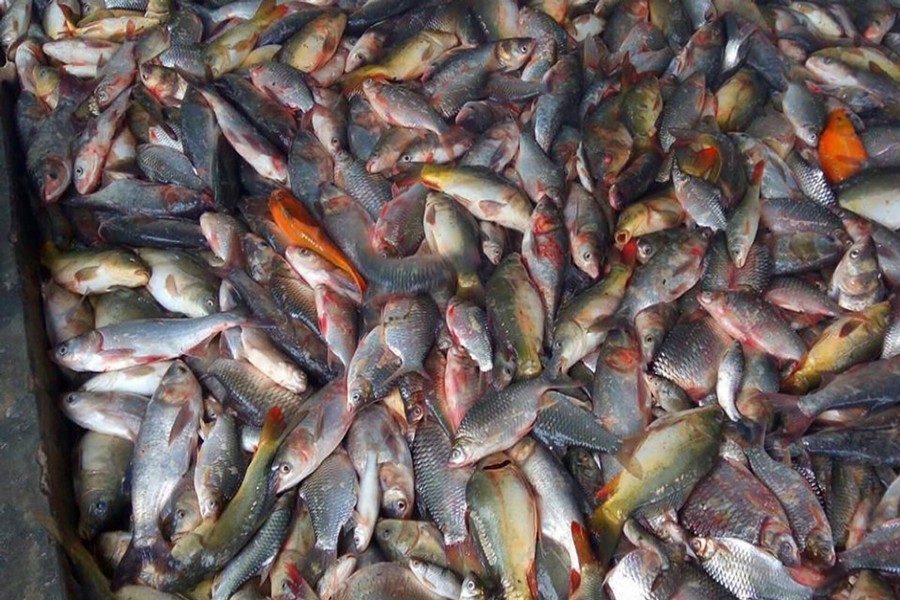Amid the media furore over the fast extinction of the age-old native fishes, there is also news people feel upbeat about. Fishing communities in a few places of the country are putting in their best of efforts in culturing these vanishing fishes. The south-western district of Naogaon is one of them. According to a FE report, people involved in fishing in the district have had a yield of about 83,609 tonnes of these endangered fishes this year. The production volume last year was 80,600 tonnes. It points to an increase in the demand. In the freshwater aquaculture, farmers mostly turned to the district's ponds and different types of water bodies. According to an estimate, there are a total of 47,326 ponds for pisciculture on 12, 895 hectares of land in 11 upazilas of Naogaon. The wetland also includes natural water bodies on nearly 34, 900 hectares of land in the district.
The boom in the native fish cultivation, largely expedited by the District Fisheries Office, is, undoubtedly, set to emerge as an instance for other districts. Researchers involved with bringing back the native fish species believe the Naogaon case would be widely replicated in the country's many fish-scarce regions. Bangladesh has for ages been a fertile fish-producing country. Rice and fish comprise the people's staple diet. A land known for growing hundreds of types of both large and small indigenous fish, it cannot let these aquatic protein sources decline further. Already over dozens of fish species have gone extinct in the last few decades.
Many jobless fishermen in Naogaon and other districts have found a new lease of life by picking this new profession: cultivation of native fish. After having worked hard in the initial years, they eventually began to reap financial benefits. At present thousands of small-scale rural entrepreneurs are found to have embarked on fish cultivation ventures. People in the regions lacking sufficient wetlands, and nearby rivers, have dug ponds. The local District Fisheries Office has provided farmers with fish fry and fingerlings. They come up with advice and tips on non-traditional fish farming methods.
In the whole process, enthusiastic farmers, at one phase or the other, face different types of hurdles. The frequently common of them have to do with marketing the fishes in urban areas and rise in the price of fish feed. Production of fish fry and their occasional fall in demand lead to a slump in fish price. It causes losses to the profit-focused entrepreneurs. However, the scene is different in many parts of the country including the Naogaon district. The District Fisheries Officer says after meeting the local demand for over 61,000 tonnes of fish in Naogaon, the fish farming community passes on the rest to other parts of the country. In the meantime, there occurred a major development -- cut in import duty on raw materials for fish feed. It is set to result in a significant drop in the price of this essential item required for fish cultivation. This in turn will benefit fish farmers. Also, it may boost production of native fishes. Time to stem extinction of the native fish has not run out. In this critical phase, government patronage is viewed as a prerequisite.


